Share
The ten biggest moons in the solar system
Unlike the Earth, which has only one natural satellite, most of the planets in the solar system have several moons. Did you know that two of them are even larger than the planet Mercury?
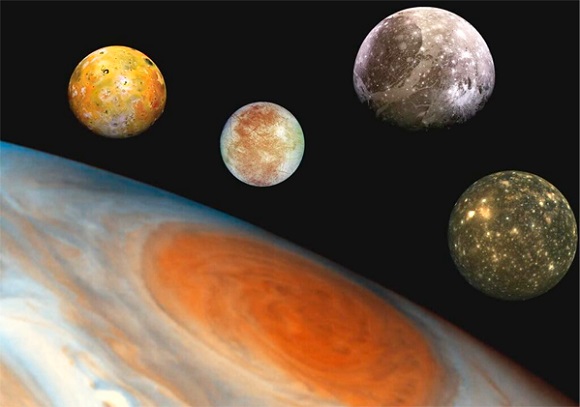
Of the ten, four belong to Jupiter, three to Saturn, one to Uranus, one to Neptune and one to our planet, Earth. Here are the ten largest satellites in the solar system in terms of their diameter.
10. Iapetus - 1500 km
Iapetus is the tenth-largest satellites of the solar system, and the third largest satellite of Saturn, discovered by the astronomer Giovanni Cassini.
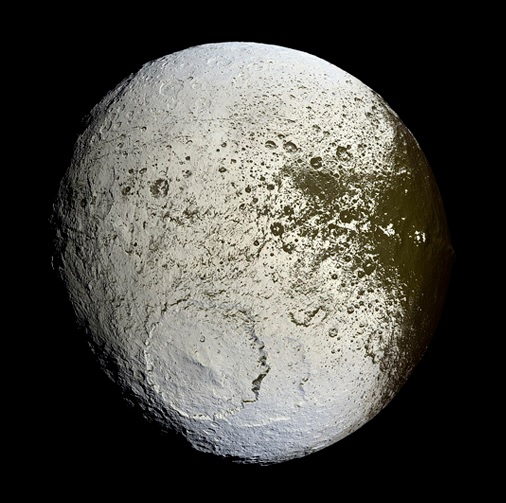
Compared to the Moon, it has a very slow rotation period, taking almost 80 days to complete one revolution of Saturn.
One of its most remarkable features is that it has a darker side than the rest of its surface. It has been suggested that this black side is the product of debris from a meteorite impact. However, other hypotheses have also been put forward, such as that it comes from some kind of volcanic activity.
9. Rhea - 1530 km
Rhea is the second largest satellite of the planet Saturn and, like Japetus, was also discovered by Giovanni Cassini in 1672.
The surface of this moon is characterized by many craters and faults on its surface, similar to those of other moons of Saturn.
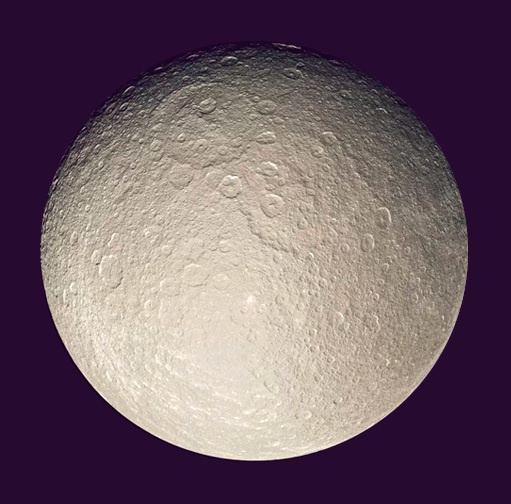
Rhea is primarily an ice satellite, with sub-zero temperatures, and takes approximately 4.5 Earth days to complete its orbit.
In mythology, Rhea, daughter of Uranus and Gaea, was the wife of Cronus. Considered the mother of the gods, she gave birth to several of the gods of Olympus, including Zeus and Hera. The craters on its surface, meanwhile, are named after characters and places from different creation myths.
8. Titania - 1580 km
This satellite, along with another satellite named Oberon, was discovered by the astronomer William Herschel in 1787.
It takes 8.7 days to go around Uranus, and exactly the same time to go around its axis, so, like the Moon with the Earth, it only shows one side to the planet.

Titania is composed of approximately equal parts of ice and rock. One of its main physical features is the presence of a large canyon, much larger than the Grand Canyon on Earth.
All the moons of Uranus are named after a character in the plays of William Shakespeare and Alexander Pope. Titania is the queen of the fairies in William Shakespeare's «A Midsummer Night's Dream».
7. Triton - 2700 km
Triton was discovered on October 10, 1846 by British astronomer William Lassell, 17 days after the discovery of Neptune. Triton circles Neptune every 5.8 days..
This satellite is named after the god of the seas, Triton, son of Poseidon in Greek mythology. It is one of the iciest moons in the solar system, as well as being the largest satellite of the planet Neptune.

Triton stands out as the only satellite in the solar system that describes a retrograde orbit, that is, its direction is opposite to Neptune's rotation. The fastest winds in the solar system have been observed in its atmosphere, exceeding speeds of 2,000 km/h.
All known detail of Triton was obtained from the Voyager 2 probe in 1989. Some of the images taken of Triton show a fascinating field, a thin atmosphere and even ice volcanoes.
6. Europa - 3100 km
Europa is a satellite of Jupiter that takes 3.55 days to travel its orbit. Its name comes from a character in Greek mythology: Europa was the mother of King Minos of Crete, one of the many mistresses of the king of the gods.
Europa is the sixth largest satellite in the solar system, in addition to being the sixth moon of the planet Jupiter. Also, it is the smallest of the so-called Galilean satellites, named after its discoverer, the famous Italian astronomer Galileo Galilei.

Scientists are almost certain that a deep ocean, between 80 and 150 kilometers deep, is hidden beneath its icy layer. If confirmed, little Europa could contain twice or three times as much water as all the oceans on Earth.
5. The Moon - 3500 km
The Moon is the only natural satellite of the Earth. It is the fifth largest satellite in the solar system, while in terms of proportional size with respect to its planet it is the largest satellite: a quarter of the Earth's diameter. It is also, after Io, the second densest satellite.
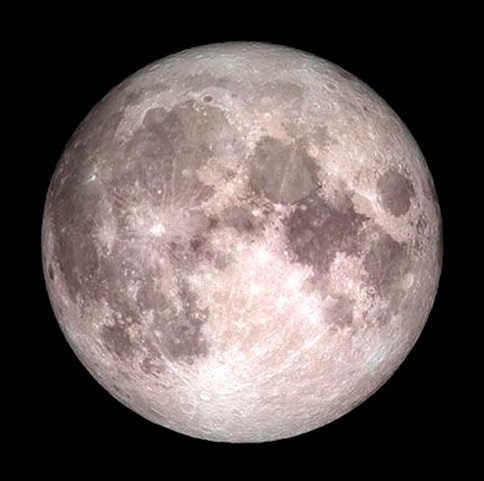
The Moon describes an elliptical trajectory around the Earth with low eccentricity, at an average distance of 384 400 kilometers. The Moon takes 27 days to go around the Earth.
The Moon is the only celestial body on which humans have made a manned descent. The Moon remains, under the Outer Space Treaty, free for exploration by any nation for peaceful purposes.
4. Io - 3600 km
The following satellite also belongs to the group of Galilean satellites. Likewise, it was discovered by Galileo Galilei in 1610, and is named after a maiden in Greek mythology.
Unlike most satellites in the outer Solar System (which have a thick layer of ice), Io is composed primarily of silicate rock surrounding a core of cast iron or iron sulfide.
It has the highest density among all satellites, since it is composed of rock; and, in proportion, the least amount of water among all known solar system objects.
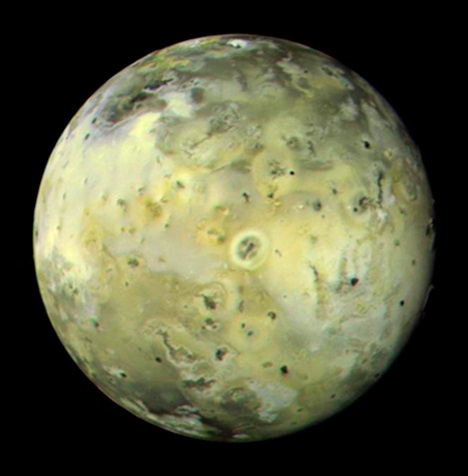
It takes approximately 1.7 Earth days to complete one orbit around Jupiter. Observations made by several probes have revealed the presence of at least 400 volcanoes on the satellite, of which 150 are active.
Io is the satellite with the highest volcanic activity recorded in the entire solar system. It is a lava world due to the gravitational interaction with Jupiter, and the temperature on its surface is estimated to reach 1.200°C.
3. Callisto - 4800 km
Callisto is the second largest satellite of Jupiter and the third largest in the solar system. It is the most cratered satellite in the Solar System. It is made up of equal parts of rock and water ice. The icy ocean hides the craters.
A peculiarity of Callisto is that it has a synchronous rotation like the Moon. Callisto takes about 17 days to orbit Jupiter and, naturally, the same time to rotate on itself.

Research by the Galileo space probe revealed that Callisto has a core, composed mainly of silicates, and furthermore, the possibility of the existence of an internal ocean of water at a depth of more than 100 kilometers.
According to scientists, Callisto's atmosphere is considered to be one of the most conducive to harboring human life. Even so, Callisto's chances of harboring life are not as favorable as on other worlds because it is still quite cold (-155 °C).
2. Titan - 5200 km
Titan orbits Saturn every 15 days and 22 hours. It was the first of Saturn's eight moons to be discovered, a credit attributed to astronomer Christiaan Huygens in 1655.
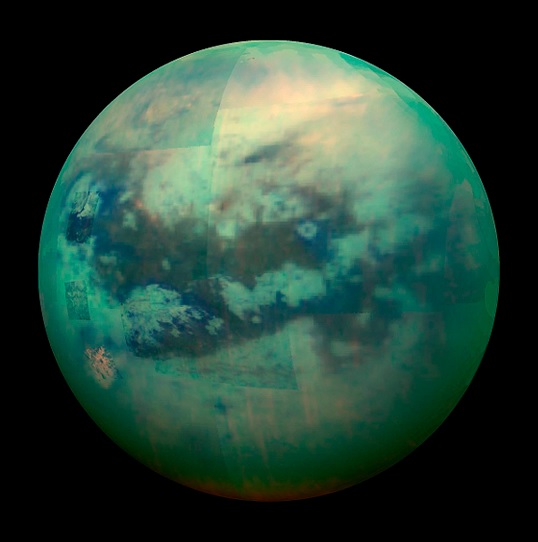
It is full of different bodies of liquid: lakes, rivers and seas. But they are not made of water, but of methane and other hydrocarbons. Titan is extremely rich in organic materials, so it is already rich in raw materials necessary for life.
NASA confirmed that it is preparing to send an unmanned probe to Titan in 2027: the Dragonfly mission, which will send a drone helicopter to explore Titan's atmosphere. That mission will arrive at Titan in 2034.
1. Ganymede - 5300 km
The first place is occupied by Ganymede, the largest satellite in the solar system and the largest moon of Jupiter. Ganymede was discovered along with Callisto, Io and Europa in 1610 by the Italian astronomer Galileo Galilei.
It is also the ninth largest celestial body in the solar system. Ganymede could have been considered a planet, as it is even larger than Mercury. However, it was called a satellite, since it describes an orbit around a planet.
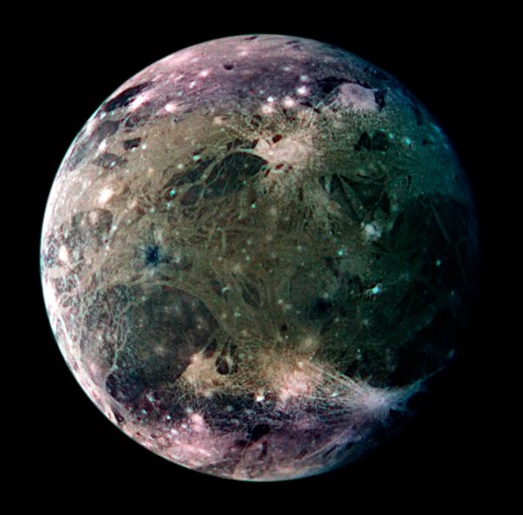
Ganymede orbits Jupiter at a distance of 1.07 million kilometers and completes one orbit every 7 Earth days.
This natural satellite is composed of silicates and ice. Ganymede is the only moon in the solar system that produces its own magnetic field.
Additionally, it is thought that Ganymede may have a liquid water ocean beneath its crust, which could contain more water than all of Earth's oceans combined.
🥇 Find out more:
✅ The 4 Galilean satellites of Jupiter
✅ How big is the Moon? How far is the Moon?
✅ Geocentric and Heliocentric models of the Universe

